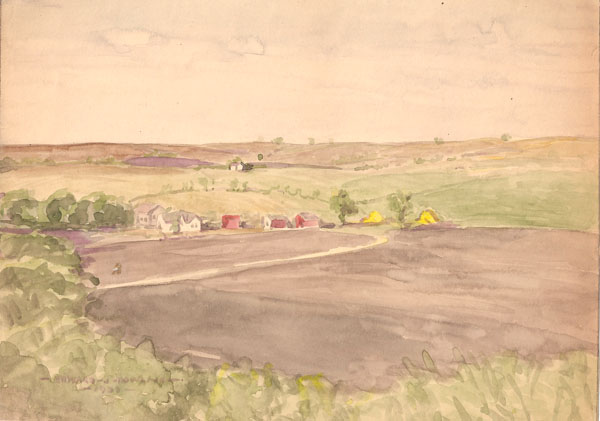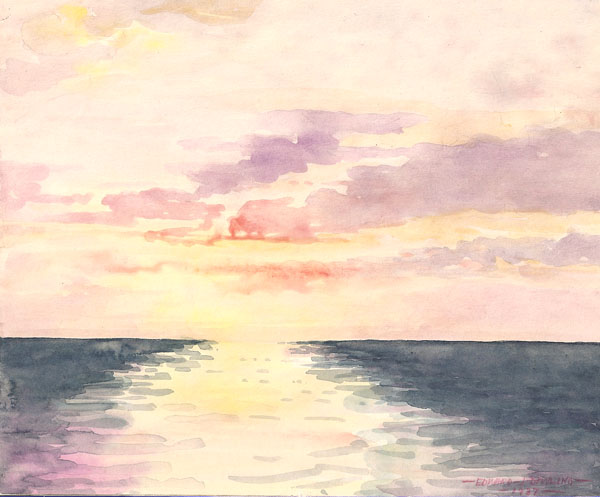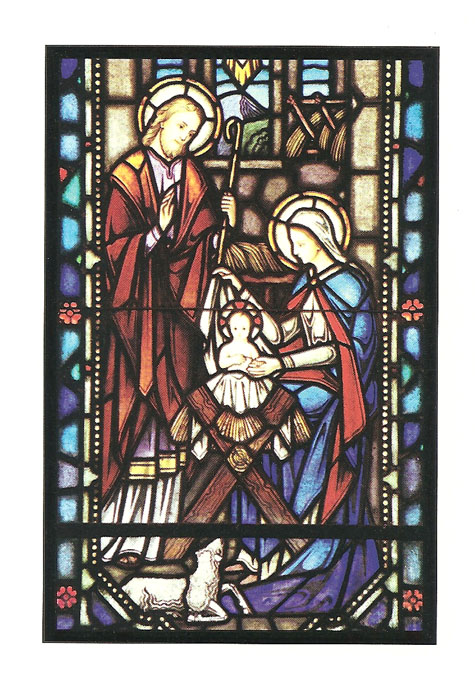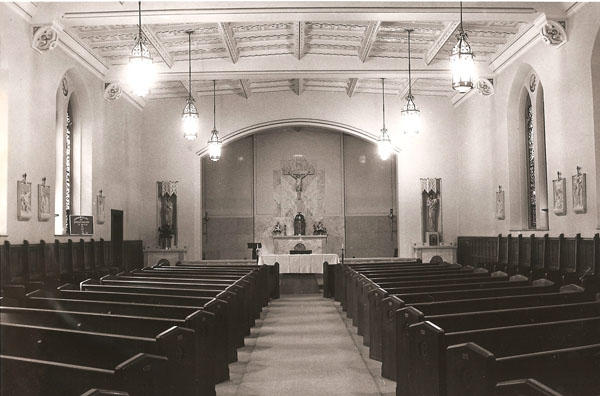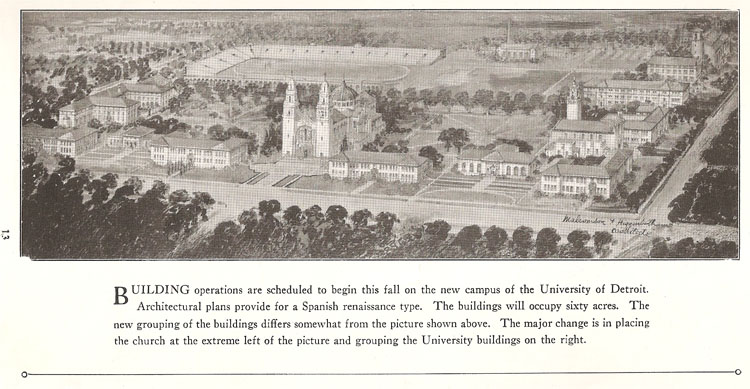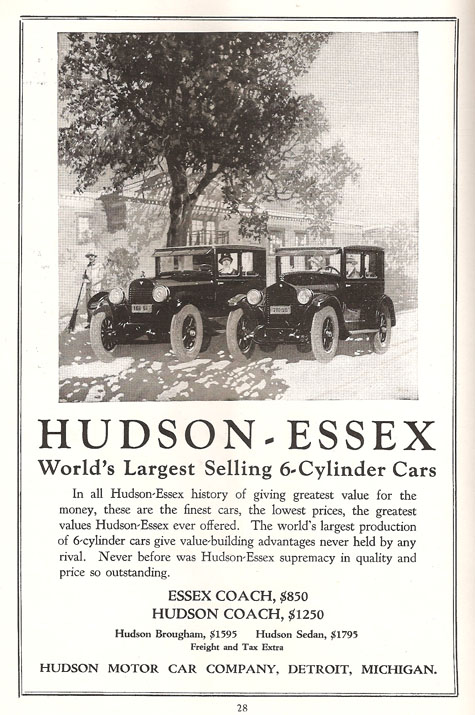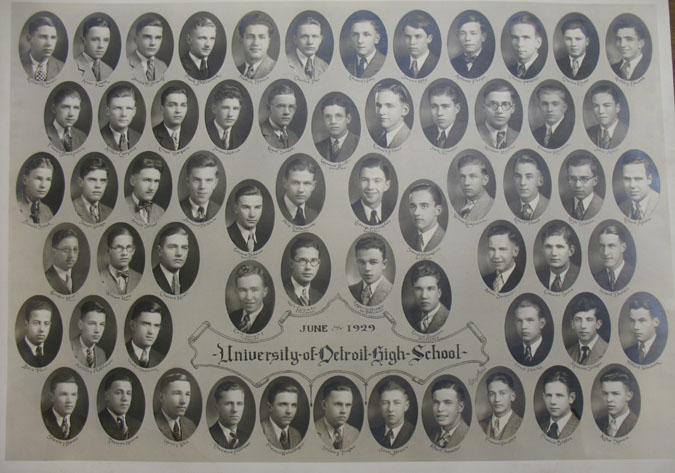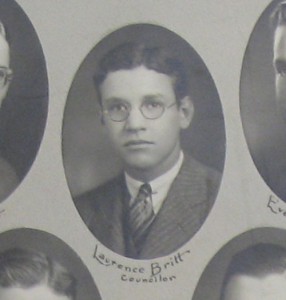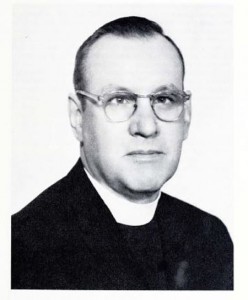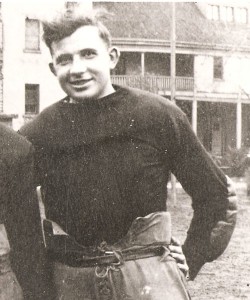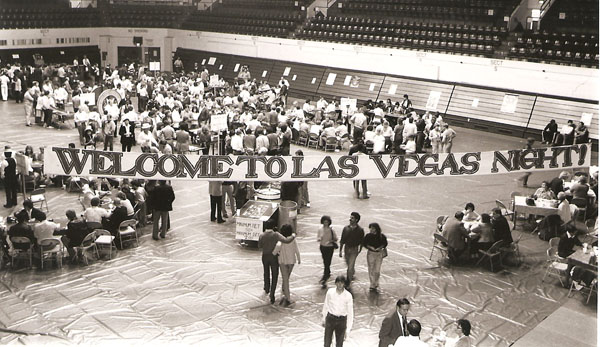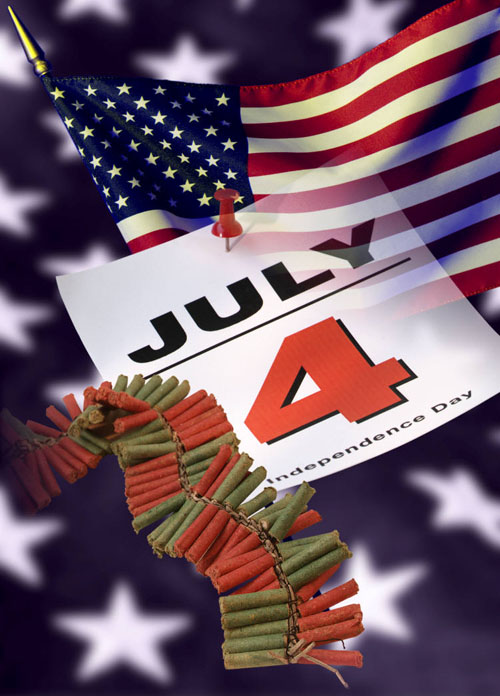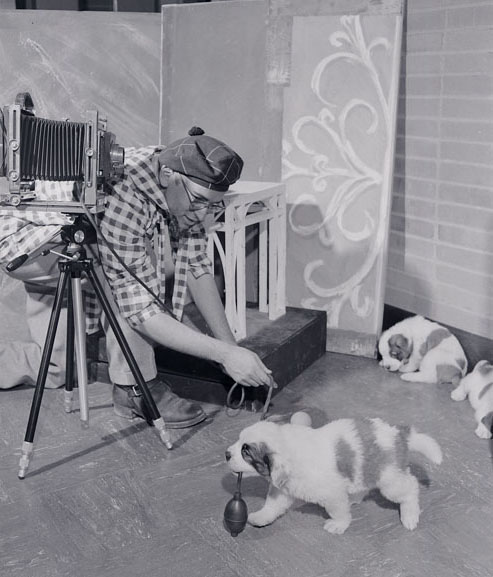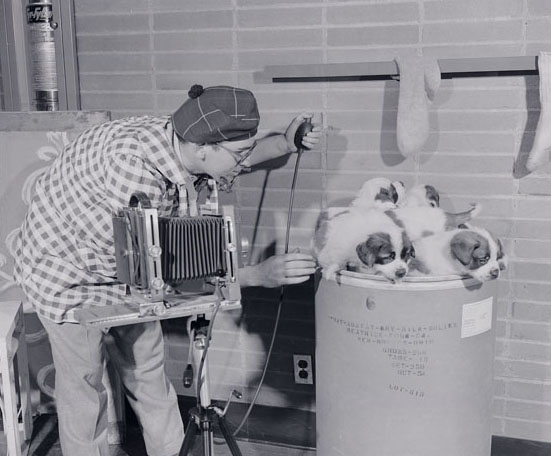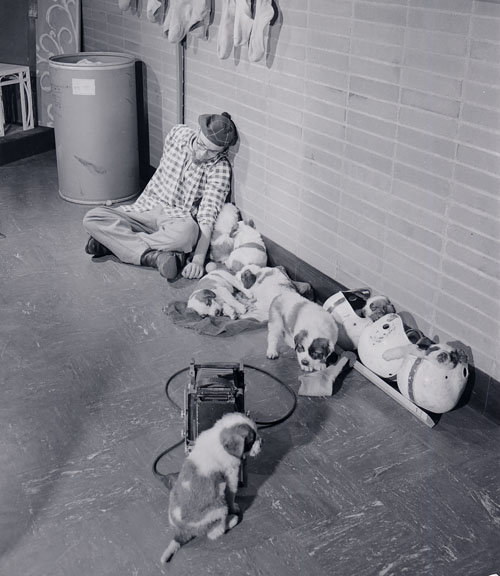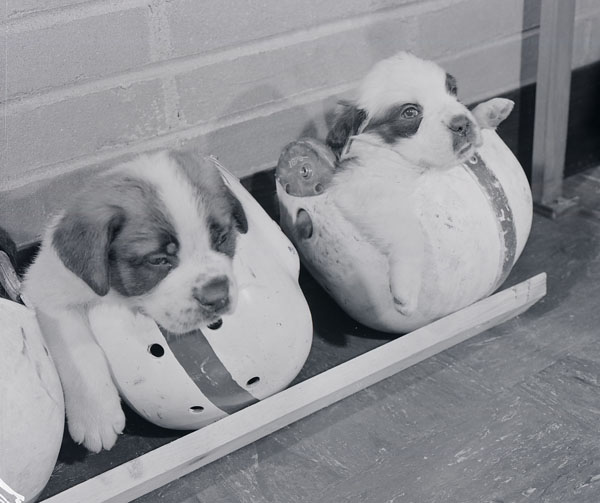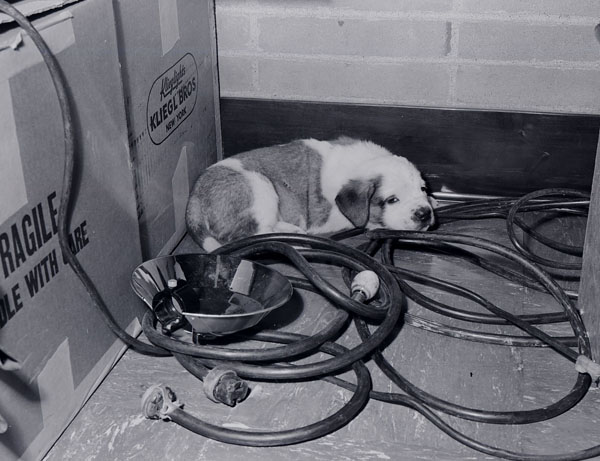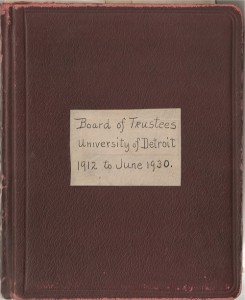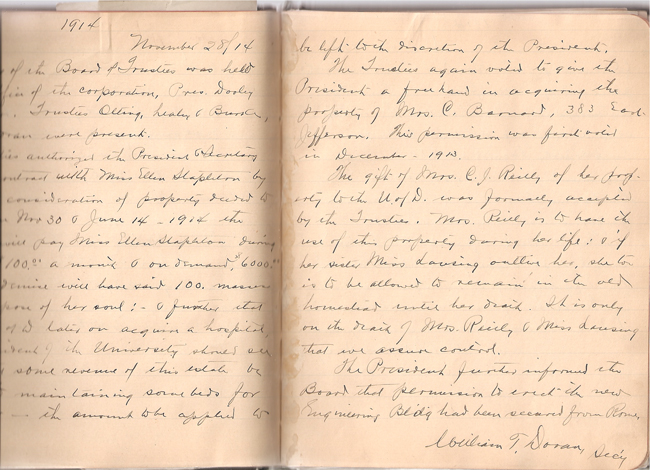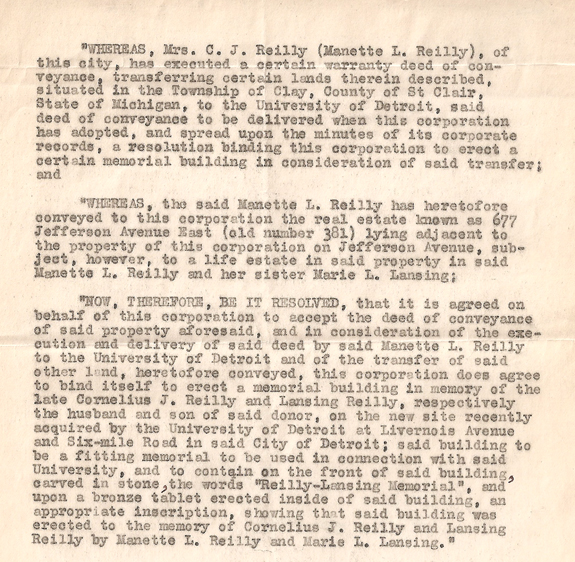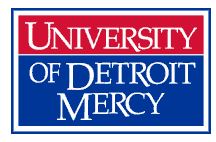 Just about everyone in the state of Michigan knows that University of Michigan colors are maize and blue and Michigan State is green and white. Most universities have just two colors, so how did University of Detroit Mercy get three colors: red, white and blue? It sounds very patriotic, but that is not how the colors came about.
Just about everyone in the state of Michigan knows that University of Michigan colors are maize and blue and Michigan State is green and white. Most universities have just two colors, so how did University of Detroit Mercy get three colors: red, white and blue? It sounds very patriotic, but that is not how the colors came about.
First the University of Detroit story:
The University of Detroit colors were red and white, based on the university’s seal. The story of the seal goes back to 1261 in Spain with the union of the families of Dona Inez de Loyola and Don Lope de Onaz. From these ancestors descended St. Ignatius of Loyola, the founder of the Society of Jesus. The family crest showed the two wolves with a kettle hanging between them on one side, and seven red bars on the other side to represent the seven heroes of the family who distinguished themselves in a famous battle of Beotibar in 1321 in which 800 Spaniards were said to have defeated 70,000 French, Navarrese and Gascons.
In 1895 Fr. James F.X. Hoeffer, S.J. chose a button or seal of the Onaz y Loyola coat of arms for the St. Ignatius College in Chicago. He suggested the other Jesuit schools also adopt the seal with colors and variations as they saw fit. Not long afterwards, U of D adopted the seal according to an article in the Tamarack issues dated October 1897. The colors chosen: “White-the clear, bright light of the intellectual unfolding; red-the pulsing, throbbing flush of the heart’s awakening!”
The Mercy College of Detroit seal:
Mercy College of Detroit also has many images symbolic of the institution’s origins. This description is given in commencement programs: “The Mercy College of Detroit Coat of Arms consists of a shield which is symbolic of the Order of Mercy. The silver cross in the red “chief” (upper compartment of the shield) also represents the Order of Mercy. The colors of the lower part of the shield are black and gold, the colors of the Archdiocese of Detroit. The open book upon the shield is the traditional symbol of a college. Upon the open pages is inscribed the motto of Mercy College of Detroit: Maria, Sedes Sapientiae (Mary, Set of Wisdom). The three canettes are taken from the arms of the Archdiocese of Detroit and therefore are symbolic of the Archdiocese and the City.” 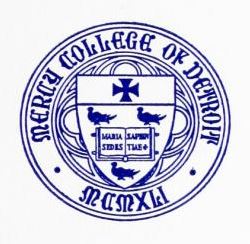
Hard to say when the entire seal was adopted. The shield part seems to be almost immediate since I was able to find it in the 1942-1943 college catalog. The total seal does not show up until the 1947-1948 catalogue. I have not been able to find any written documentation as to why the colors for Mercy College came to be blue and white. All I can tell you is that it seems that most of the memorabilia and banners I have for Mercy College have a blue and white color scheme and the basketball uniforms and cheerleaders outfits were also blue and white.
At any rate, when the two institutions consolidated in 1990, all the colors combined to the red, white and blue combination you will see today in the logo and the university seal which you can see on this link. (It is only for use on official documents, which is why it is not posted here.)
If you attend any commencement ceremony, the colors of the hood for those with a master’s and doctorates degrees from the University of Detroit Mercy will have the red, white and blue colors showing. Whenever I attend commencement, I always check out the different colors all the faculty get to wear and think the next time I go for a degree, which university has a color I would like to wear.
Have a safe and happy Fourth!
Pat Higo, Archives and Special Collections Librarian

